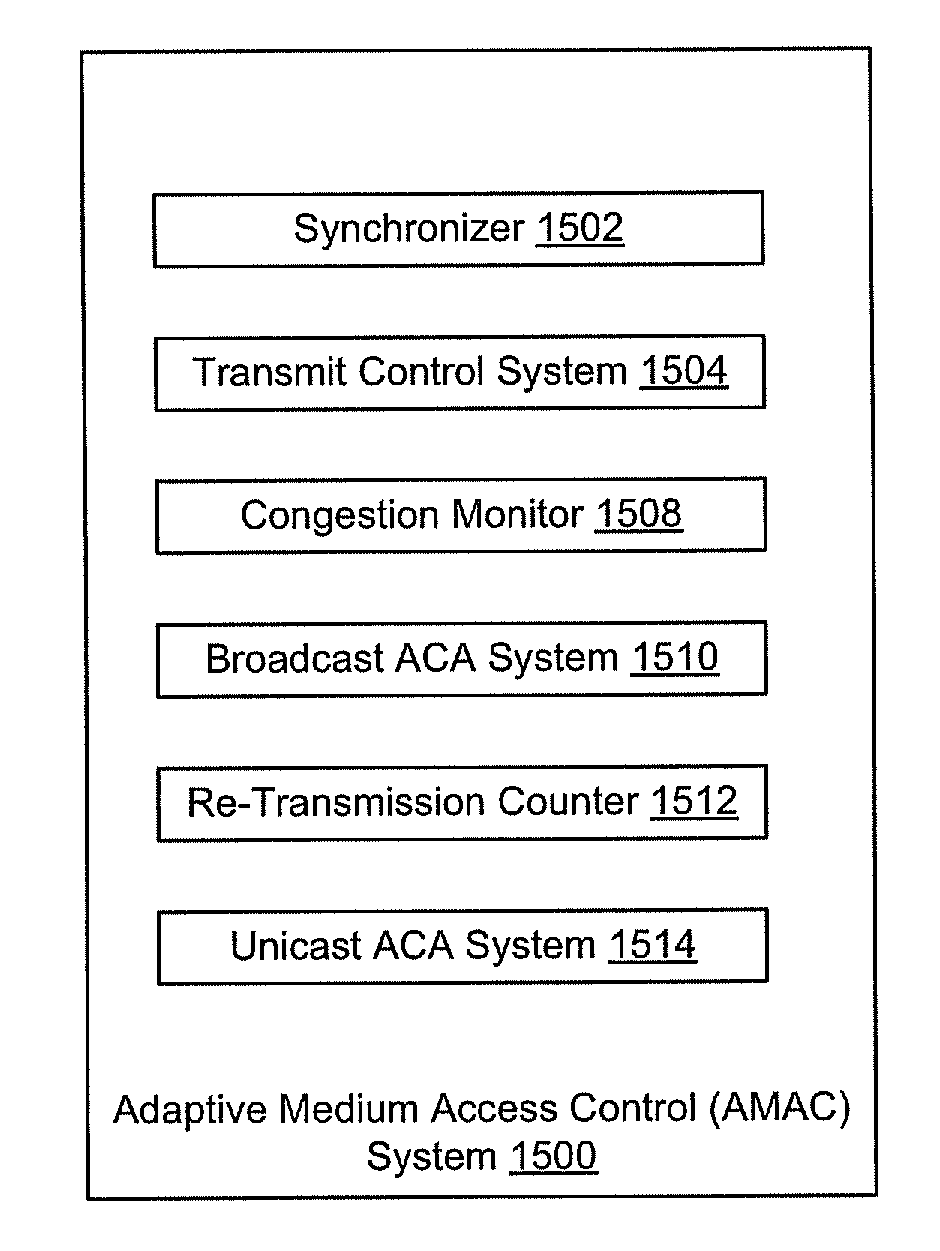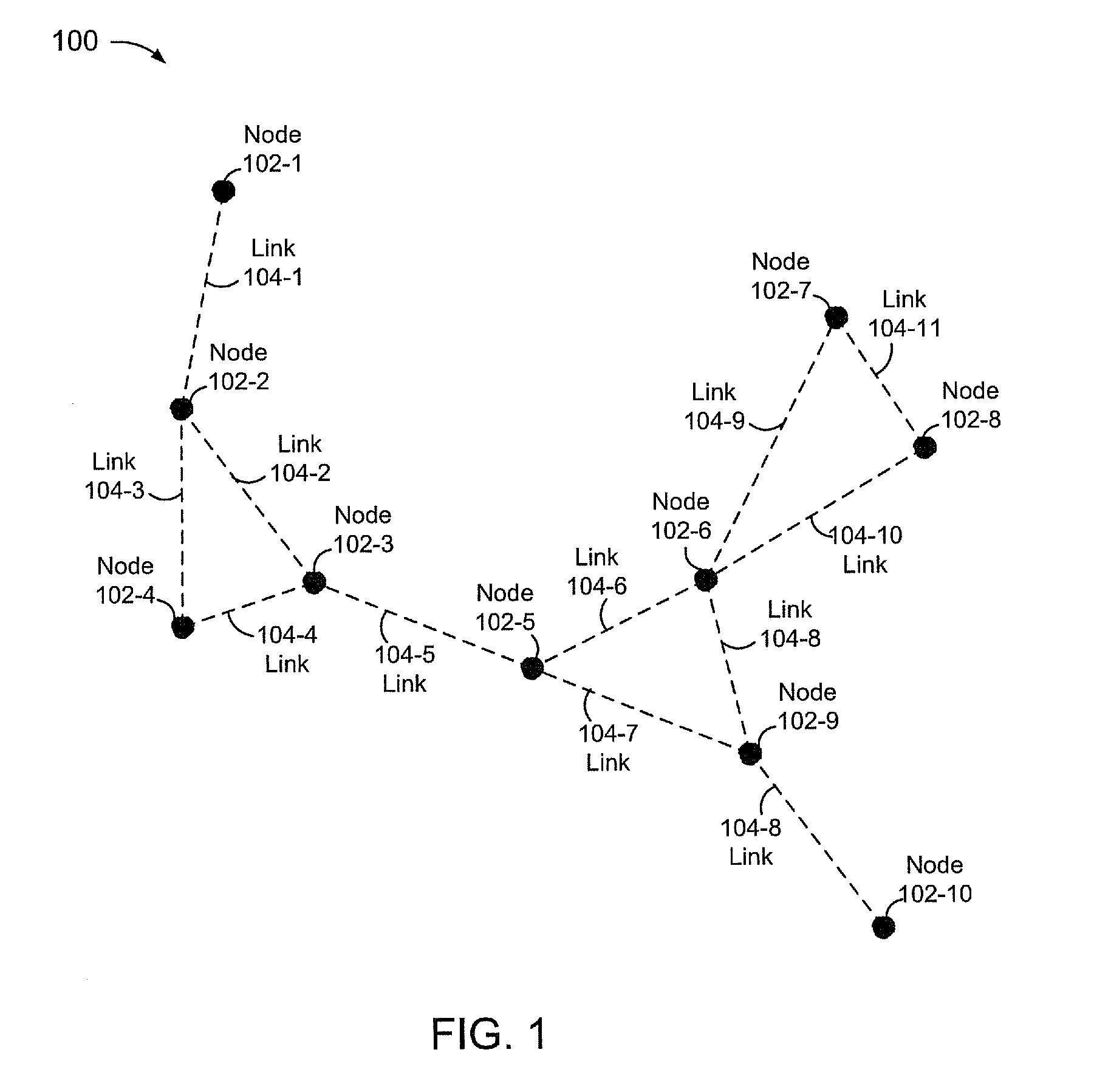Adaptive Medium Access Control
a technology of access control and adaptive medium, applied in the field of adaptive medium access control, can solve the problems of collision and channel congestion, increased and even more challenging dynamic restructuring, and achieve the effect of limiting the risk of unused bandwidth
- Summary
- Abstract
- Description
- Claims
- Application Information
AI Technical Summary
Benefits of technology
Problems solved by technology
Method used
Image
Examples
Embodiment Construction
[0002]This invention was made support from the U.S. Naval Air Systems Command under contract number N68936-09-C-001. The U.S. Government has certain rights in the invention.
BACKGROUND
[0003]1. Technical Field
[0004]Methods and systems are disclosed herein with respect to adaptive medium access control (AMAC) and, more particularly, AMAC in wireless ad hoc networks, including wireless mobile ad-hoc networks.
[0005]2. Related Art
[0006]A wireless ad hoc network is a decentralized type of wireless network that does not rely on a preexisting infrastructure, such as routers in wired networks or access points in managed-infrastructure wireless networks. Instead, each node participates in routing by forwarding data for other nodes. A determination as to which nodes forward data is made dynamically based on network connectivity. The decentralized nature of wireless ad hoc networks makes them suitable for a variety of applications where central nodes cannot be relied on.
[0007]Wireless ad hoc net...
PUM
 Login to View More
Login to View More Abstract
Description
Claims
Application Information
 Login to View More
Login to View More - R&D
- Intellectual Property
- Life Sciences
- Materials
- Tech Scout
- Unparalleled Data Quality
- Higher Quality Content
- 60% Fewer Hallucinations
Browse by: Latest US Patents, China's latest patents, Technical Efficacy Thesaurus, Application Domain, Technology Topic, Popular Technical Reports.
© 2025 PatSnap. All rights reserved.Legal|Privacy policy|Modern Slavery Act Transparency Statement|Sitemap|About US| Contact US: help@patsnap.com



